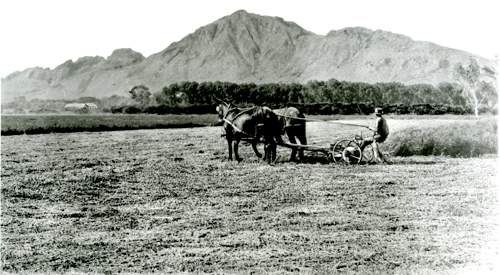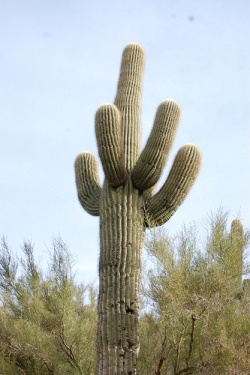Overview of Camelback Mountain
Camelback Mountain is located in the Camelback Mountain Echo Canyon Recreation Area between Phoenix, Scottsdale and Paradise Valley. At its peak Camelback Mountain is 2,704 ft (825m) above sea level, and provides 4 hiking trails, 2 of which gain over 1,200 feet in elevation to the top. The name “Camelback” originates from the shape the mountain casts in the skyline, best viewed from the north.
Camelback has become a popular landmark, tourist attraction and local hiker training spot. It is also very common to find recreationists, rock climbing or bouldering along many of the challenging rock faces.
~View Info About Camelback Hiking Trails~
History
 There is a cave to the north side of Camelback Mountain that has lead archeologists to note that Camelback Mountain was used as sacred prehistoric site by the Hohokam Indian Culture prior to the 14th century. This is why the mountain is often referred to as “The Sacred Mountain.”; This small cave can still be traveled through on the Echo Canyon Trail.
There is a cave to the north side of Camelback Mountain that has lead archeologists to note that Camelback Mountain was used as sacred prehistoric site by the Hohokam Indian Culture prior to the 14th century. This is why the mountain is often referred to as “The Sacred Mountain.”; This small cave can still be traveled through on the Echo Canyon Trail.
In 1870 US President Rutherford B. Hayes incorporated Camelback in a one-million acre Indian reservation for the Salt River Pima and Maricopa American tribes. However only six months later, Charles Debrille Poston, the “Father of Arizona” helped to reverse the decision to protect both the some 5000 residents and water resources located in the area.
From 1910 – 1960 land around Camelback Mountain was sold to private interests. Despite efforts from both Federal and state authorities, developers built all the way to the roughly the 1,600 foot level around the mountain base. One famous developer was Russ F. Tatum, who has a nearby street named in his honor Tatum promoted land where Paradise Valley Country Club is now located.
The ongoing development however was halted when in 1965 historic US senator Barry Goldwater secured higher elevations and established the mountain as well as surrounding areas as a Phoenix city park in 1968. Both President Lyndon Johnson and Secretary of the Interior Stewart Udall attended this land exchange and momentous event.

Geology, Flora and Fauna
 Camelback Mountain is made up of a geologic unconformity (a buried erosion surface separating two rock masses or strata of different ages). The highest part of the summit is Precambrian granite (1.5 billion years old). The head of the camel however is mostly red sedimentary sandstone reigning from the Tertiary period (25 million years old).
Camelback Mountain is made up of a geologic unconformity (a buried erosion surface separating two rock masses or strata of different ages). The highest part of the summit is Precambrian granite (1.5 billion years old). The head of the camel however is mostly red sedimentary sandstone reigning from the Tertiary period (25 million years old).
Because there are many homes and resorts in the surrounding area, larger mammals are not found in the park. There are however many smaller wildlife common to the Sonoran Desert including, rabbits, snakes, lizards, squirrels, Gila monsters, roadrunners, quail, dove along with many other types of birds. Rattlesnakes are uncommon to see on the trails however may appear and are more likely to be present at or around sunset.
Plant life is fairly sparse, which is common with Sonoran atmospheres. There are however many types of cactus on the mountain including saguaro, barrel, pincushion, cholla and prickly pear cacti. There are also palo verde, mesquite and ironwood trees, along with various other ground plants.

Be the first to comment